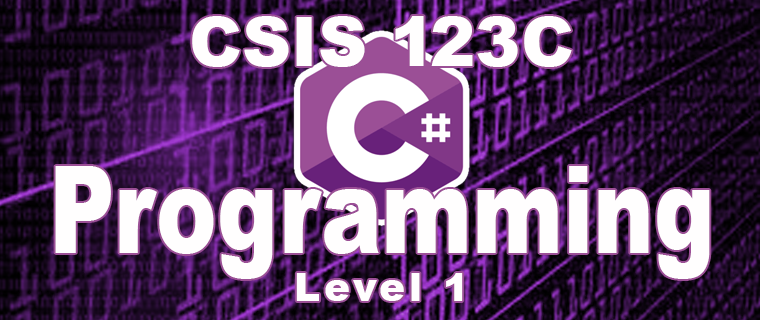Courses
Select a Course:

Course Description
This course introduces the student to advanced concepts of object-oriented programming (OOP) using the C# programming language. Students will investigate and evaluate various program design methodologies and apply them to programming problems using C#. C# features that will be covered include language syntax, encapsulation, inheritance, polymorphism, graphics, multi-threading, files, streams, and networking. This course is designed for students who wish to further develop their C# programming skills.
By successfully completing this course you will earn 3 units of college credit.
⇑ Table of Contents
Course Objectives
-
Develop a program design using any of the following program design methodologies (PDM): structured programming, functional decomposition, Class-Responsibility-Collaborator (CRC) design for complex programming problems.
-
Design structured computer programs.
-
Design and prepare C# programs that appropriately demonstrate exception handling.
-
Construct a C# program that uses advanced graphical user interface components to interact with users.
-
Create standard and complex input/output operations in C#.
-
Compose and synchronize multi-threaded C# applications.
-
Compose a program that Uses inheritance to create custom objects.
-
Produce a program that applies the concepts of polymorphism to create custom C# controls.
-
Design a C# program that uses network sockets to communicate with remote computers.
⇑ Table of Contents
Course Learning Outcomes
-
Create data files via a C# program (based on a problem/case scenario).
-
Read data from data files.
-
Write data to data files.
-
Research and identify some advanced aspect of the C# programming language.
-
Prepare a technical report or presentation on some advanced aspect of the C# programming language.
-
Research and identify career paths related to the C# program of study.
-
Document career paths related to the C# program of study, as well as any qualifications and/or professional certifications that may be associated withthose careers.
⇑ Table of Contents